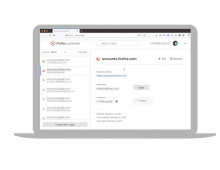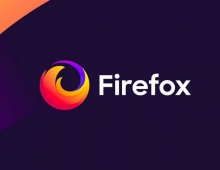
Mozilla's Plans For Firefox in 2012
To address the issue of people updating Firefox but having their desired add-ons stop working, from Firefox 10 add-ons Mozilla made Compatible by Default. This means that all add-ons that were marked compatible for Firefox 4 and higher will automatically be enabled in Firefox 10 and later.
In order to complement the popularity of the Firefox Sync feature, from Firefox 11 users are able to also sync add-ons.
To cater to update fatigue, updates will also be downloaded and installed silently in the background. It means that startup and shutdown of the web browser won’t be affected by installation routines. Additionally, the 'What’s New' page displayed after an update can now be displayed depending if there is important information needed to be displayed to the end user. Silent updates are currently planned to land in Firefox 13, Mozilla said.
Mozilla's Developer Tools in Firefox continue to evolve, with a number of features outlined in the Developer Tools roadmap
When it comes to the web platform, Mozilla has a number of new features in store:
- WebRTC
Support for real time audio, video and data communication between two web browsers. The implications of this are huge and it will enable a lot of interesting real-time communication solutions and richer web games. - Completing Web Sockets
Make Web Sockets match the W3C protocol and API parts. Web Sockets are an interesting solution to offer bi-directional and full-duplex communications over TCP, and it enables pushing things from web servers without the need for a web page to constantly poll it and ask. - SPDY
Allows for multiplexing and connection sharing. It’s SSL only, and will offer faster page loads and better scalability for SPDY-enabled web servers. Mozilla's goal is for end users to have a much faster web experience with all kinds of content, from more regular web sites to high-performing ones in the form of games and media. - HTTP Pipelining
Offers a significant performance gain, in particular in regards to high latency connections. Will also help in those cases where SPDY is not enabled/an option and build on existing infrastructure. - HTTP Pre-connections
Opening HTTP connections before page loads to improve performance, and is based on the assumption that users will go back to the same sites. A complement to SPDY and HTTP Pipelining in offering a faster user experience on the web. - DASH WebM
Brings adaptive streaming of WebM video with DASH, and is outlined in Matroska/WebM in MPEG DASH. Offering proper streaming of video on the web could vastly improve user experience, and allows Firefox to adapt to changing network conditions and resolution changes (for instance, to/from fullscreen viewing). - Web Apps improvements
A great number of features to make Web Apps more integrated into Firefox, to offer users a seamless integration and to complement the Mozilla Marketplace. - Uploading directories and accessing to Local Media Storage
Gives access to entire directories through File API or to upload them, with their subtrees intact, and additionally gives access to upload, sync or other actions with Local Media. - CSS Flexbox and CSS Grid
Implementing support for the latest versions of CSS Flexbox and CSS Grid, where the idea is to offer a number of improved ways of doing layout on the web. - Capturing keys in fullscreen mode and Mouse Lock API
With fullscreen support in web browsers, the next step is improve the gaming and interaction experience for building more advanced web sites with key input in fullscreen mode and also being able to use the mouse as a controller instead of as a pointer.
More details on the web platform is available in the Web Platform roadmap.





















